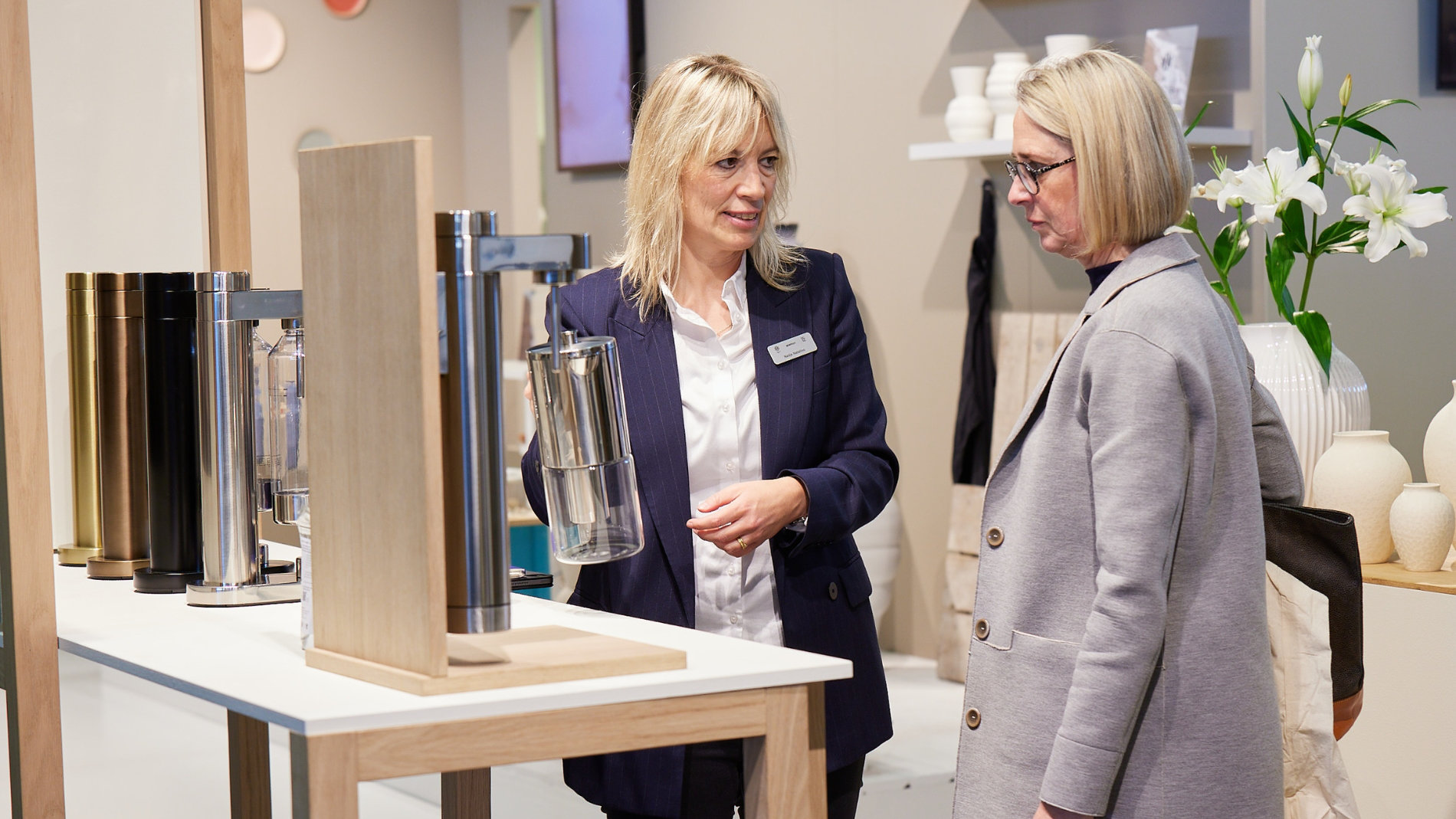The right customer approach in retail often makes the difference between a sale and a missed opportunity. But how do you engage customers effectively, spark their interest and build lasting relationships? This article offers practical strategies and proven methods for successful customer communication.
What Is a Sales Conversation?
A sales conversation is far more than just an exchange of product or service information. It is a personal interaction between seller and customer, where trust, likeability, and expertise play a crucial role. Good customer engagement goes beyond a simple greeting – it means actively addressing customer needs and wishes in a natural, authentic, and unobtrusive manner.
Find out more about innovative shopping strategies in our article on The Future of Shopping.

Tips & Tricks for Optimal Customer Approach
1. First Impressions Matter
The first interaction determines whether a customer feels comfortable or not. A friendly smile, eye contact, and upright posture are the cornerstones of a successful greeting. However, the store environment also plays a role. An attractively designed retail space can increase dwell time and enhance the shopping experience. Modern concept stores demonstrate how innovative design can effectively engage customers.
2. Choosing the Right Greeting
Not all customers want to be approached immediately. While some prefer a direct conversation, others want to browse undisturbed. A situational approach is therefore essential:
- Open customers: “Good day! Lovely to have you here. Are you looking for something specific?”
- Reserved customers: “Hello, feel free to have a look around. If you have any questions, I’m happy to help.”
- Hurried customers: “Good day! Let me know if I can help you find something specific.”
3. Active Listening and Asking Targeted Questions
Active listening demonstrates genuine interest and creates a trusting atmosphere. Instead of using generic sales phrases, open-ended questions help to better understand customer needs:
- “What occasion are you looking for [product]?”
- “What is most important to you?”
- “Have you had any experience with [product] before?”
4. Communicating Added Value Instead of Just Selling
Customers don’t just buy a product – they buy a solution to a problem or an experience. Highlighting the benefits of a product instead of just listing features makes it more memorable.
Example:
- Instead of: “This vase is made from high-quality ceramic and is very durable.”
- Better: “This vase is not just a stylish home accessory but also a timeless design piece that adds an elegant touch to any room.”
Tip: Sustainability is becoming increasingly important in retail. Learn more about Sustainability in Retail.
5. Using Body Language Consciously
An open posture, friendly gestures, and appropriate proximity are essential. Too much distance feels impersonal, while too little can seem intrusive. A useful trick: Subtly mirror the customer’s body language to create harmonious communication.
6. Maintaining Honesty and Authenticity
Sales staff should stay authentic and avoid luring customers with exaggerated promises. Honesty pays off in the long run, as only satisfied customers will return.
Understanding Buyers’ Needs – What Really Matters
Customers often have clear expectations – even if they don’t express them immediately. The most important expectations for good customer service are:
- Friendliness and respect – No one likes pushy or unfriendly salespeople.
- Competence and honesty – Customers expect well-founded information and an honest opinion.
- Personalised advice – Every customer has different needs. Generic phrases feel impersonal.
- Patience – Not all customers decide immediately. Patient staff can make the difference.
- No pressure, just support – Pressure creates resistance, whereas genuine helpfulness builds trust.

Conclusion – The Most Important Points at a Glance
A successful customer approach in retail requires sensitivity, people skills, and empathy. Communicating at eye level, staying authentic, and offering real value leads to long-term success.
Most important tips:
- A friendly first impression with eye contact and a positive attitude.
- Personalised greetings tailored to different customer types.
- Active listening and asking targeted questions.
- Communicating value instead of using generic sales strategies.
- Conscious use of body language to create a trusting atmosphere.
- Honest and authentic advice without applying pressure.
Retailers who consistently apply these strategies can strengthen customer loyalty and increase sales.
Questions and Answers on Customer Approach in Retail
What Are the 7 Steps of Selling?
A successful sales process follows a structured approach to ensure that customers feel well-advised and understood. These seven steps help to shape the sales process professionally and customer-oriented:
- Greeting and first impression
- Needs analysis through questions
- Product presentation with value-based selling
- Handling objections and concerns
- Closing the sale with targeted prompts
- Offering additional purchases (cross-selling)
- Farewell and follow-up
How Can Customers Be Addressed Most Efficiently in Retail?
An efficient customer approach is situationally adapted, friendly, and authentic. The most reliable method combines a friendly greeting, active needs analysis, and personalised advice without relying on pushy sales tactics.










